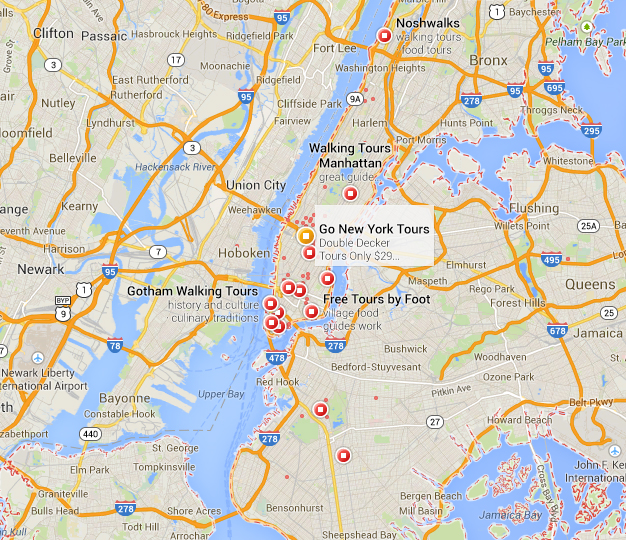Much like our vanishing ability to process information in chunks longer than 140 characters, we seem also to be losing our ability to savour – or even undertake – walks that are longer than a few steps toward a specific, pre-conceived goal, Nidhi Dugar Kundalia reminds us of what we are missing along the way….
It is a tiny village in north of Rajasthan- Rajaldesar where the family goes every year to spend time on the cattle farms. There are no roads in this village of ours. All footpaths in this village of desert sands and Khejri trees, are of ‘old ways’ they have taken time to come into being, and have been formed by the passage of many feet. It’s a bit tough, actually nearly impossible to make a path like that on your own, unless you walk over it hundreds of times. Okay, so there are some roads here too, and even an occasional Indica with yellow number plate that zooms past us. But we always choose the old ways. That’s partly because we are charmed by this grid of paths that join with one another and cover much of the village and mostly because they seem to promise a way of walking deeply into, rather than just frivolously across, the landscape.
And the promise, as always, was made. We meet Marudhar Singh, who started the first internet café in the village for ‘ladies only’;. Raj Ashree, a school teacher who lives in a one room home that often hosts ‘gora’ guests – foreign expats who trickle down from Jaipur for the ’village feel’. You can also spot an odd anthill, being poked into by toddlers with long sticks. Cans of tobacco, emptied and filled with water peek through the sand, dug into it in the evenings by the children to convert the water into ice that they can happily suck on hot days. There are mock trees made for goats with torn Babul leaves. When the night falls, there is a kind of soft, velvety darkness that city life leaches out of memory. There is a cadenced chirring of crickets in the undergrowth, and, on the trees, fireflies, winking like lamps from another era. As we walk ahead, they pulse on and off on one bush, and then the next. The paths taper between light bajra fields and scattered mud houses. They leave footprints, these little passages, that run around the village school and behind a newly made field.
Over the years, I have been walking. I have been wonder-struck countless times by the sight of storm-light, sundown, high peaks or wild water, as well as by the behaviour of creatures and people, walking through old ways and new – in Hanoi, Cape Town, New York, London, Auckland, Mumbai, Venice and Paris. Over bridges, roads, sidewalks, trails, by lanes, aisles, alleys, cobbled streets, steps, stone, hikes and dusty paths. I pass through an extraordinary amount of time, and cross the world, as I move between buildings in these cities– from the 12th century to the modern day, from old quaint markets to suave Japanese restaurants. Each street has its own tale, each building its own story. All walks begin somewhere that you know. From that familiar starting place, you will head down streets you recognise, until you find ones you only know a bit. I keep wandering, and sometimes get lucky enough to realise I’ve arrived somewhere. Slowly, the streets start linking up, and you can connect these different areas in your mind. While walking through a city, streets and buildings may not change often, but there is a cast of people that do, an endless procession of interesting faces– a Zimbabwean refugee who instead of feeling culturally marginal walks into home sphere in Cape Town; a black man still finding his political worth in New York; a data collector still using his feet as an indispensable means for population calculation in Mumbai.
Of course, there are obvious peripatetic pleasures that most cities have in common. A sense of history, gorgeous buildings and must-see landmarks (or views) all make for an experience better treasured on foot. But there is also a specific kind of commerce that helps make a cityscape charming to explore by walking—like the ubiquitous sidewalk cafés without which cities like Paris, Vienna and Venice would be lesser versions of themselves. Like the smells of crepes suzette wafting from croissants the countless cafes behind Notre` Dam in early morning Paris, or the way the light glitters and reflects off of New York’s glass skyscrapers. Or simply the childlike joy one feels when set loose in a strange, labyrinthine streetscape that promises adventure and the chance to get wonderfully lost. (Buongiorno, Venice!) And in those times, walking just becomes a sense. I was also brought to reflect on the darker relationship between walking and despair–, looking for some kind of refuge in lives that have gone wrong– lovers, mourners, losers, loners or those looking for answers amongst these cold buildings and tar laid streets.
More and more cities are now making themselves walking friendly. This story struck me when I was in Cape Town this summer. Jane walks, a global phenomenon that encourages communities to hold walks on their areas seeped its way through South Africa last year. Jane Jacobs was an American community organiser who helped save her neighbourhoods from destruction by the hands of outside interests. Long after her death, her followers all over the world organise community walks to encourage walking through the city. Copenhagenisation, another phenomenon that has increased the use of sidewalks and shifted the focus of the flourishing cities to bicyclers and walkers, was devised by Jan Gehl. Using the model of Copenhangen, he advised cities around the world, including Melbourne, London and New York, on how to improve the quality of urban life – in his words, how to ‘Copenhagenise’ their cities. The point of walking the city, in a bid to increase intimacy with it was okay, but now there is a whole new lot of travellers who increasingly Google websites for information on a city before they land in there to sign up for these ‘City walks’they claim that they are the new adventure travellers!
This brings me to the crux of this story, perhaps a tad bit too dissident but remarkable nevertheless. In a bid to explore the city more intimately, more and more city tour operators are starting ‘walking tours’. Take, for instance, this ‘free walking tour’ we signed up in Paris. We passed some pretty Creole cottages from the 1800’s, and then a 17th Century wood-building in the French colonial style. Some millwork frippery, French windows… It’s as if the city had trucked out these houses for a house sale, and just left them along the curb without any plot or plan.
The operator guiding us talks a minute or two about each, all hardwired for a story with a beginning, middle, and an end with random, isolated anecdotes about a grab-bag of different styles. For someone who grew up reading books and book-length non-fiction, it feels like I’m reduced to reading the tweet history of the French Quarter!
Modern life, of course, keeps getting more axed, chopped and fragmented. Nonfiction seems to be getting shorter and shorter (we magazine editors no longer even apologise to columnists for assigning ‘lists’ or ‘charts’). And the long walk has gradually become disaggregated into a series of minuscule marches, each now with its own tenacity. Anything more than 140 characters or a few dozen steps begins to feel onerous and we grow restless. The walking tour we join clocks in at just under a kilometre, and for some visitors that qualifies as adventure travel.
The thing is, the quality of our walks has changed – on those occasions when we do move by foot today – at least in my experience and what I hear from others, it always seems to involve fleeting, intense tromps driven by a single purpose. We walk to the garage to get to the car. We walk from the mall parking lot to Big Bazaar. We walk from Gate 2 to Gate 9 in Terminal A.
Fundamentally, we are tweet-ing with our feet all the time.
What are we losing by walking less, and breaking up our walks into missions? We lose that opportunity to tightly stitch together our world. A long walk — it takes about three hours to walk 10 kilometres, and without breaking a sweat — gives us time with our opinions, and establishes the right speed to cherish the intricacy of the world around us. It gives us time to plait the warp of haphazard observations and the cry of random thought. We create a narrative. We create a place.
On the French Quarter walking tours, and many others we have attempted around the world, I always hope to build connections to a multifarious, captivating past, sometimes ennobling, and often disturbing. But then the guide is always making sure you look down so you don’t stumble on the notoriously uneven walks, and at the same time look up so they don’t miss the infamously elaborate architecture.
But there is no urging from to linger around the courtyards that are alive with lemon trees and bougainvillea and touches of lives once lived. These are worlds invisible by zooming car, and they are just as invisible to those on a project-driven mission.
I’m gradually resigning to the consecutive chaos of our streets. I’m definitely letting go of the narrative I want to impose on the cities. I’m now just hoping that things slow down, and those who are walking the walks, build their own tales and chronology from the small niceties that come along the way.














